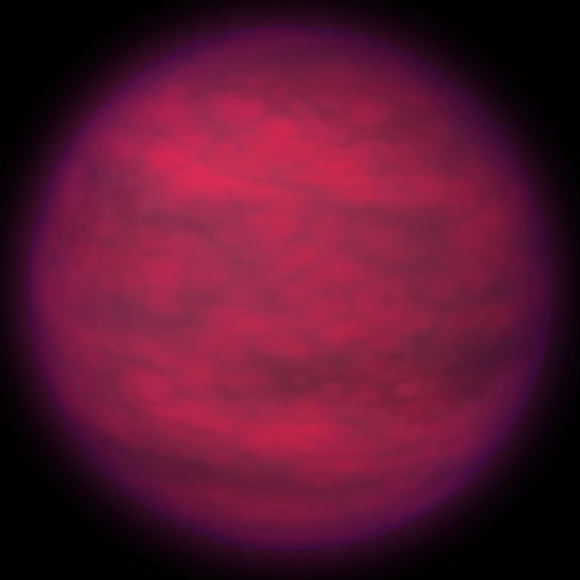An international team of astronomers has discovered 165 new ultracool brown dwarfs — objects that have a size between that of a gas giant and that of a small star — within about 160 light-years of the Sun. The paper reporting these results will be published in the Astrophysical Journal (arXiv.org preprint).

This artist’s conception illustrates what a T-type brown dwarf might look like. Image credit: NASA / JPL-Caltech.
Brown dwarfs are cool, dim objects that are difficult to detect and hard to classify.
Sometimes called failed stars, they are too small to sustain hydrogen fusion reactions at their cores, yet they have star-like attributes.
Typically, brown dwarfs have masses between 13 and 80 Jupiters — too massive to be planets, yet they possess some planet-like characteristics.
Their temperatures can range from nearly as hot as a star to as cool as a planet.
Discovering new brown dwarfs will help astronomers to better quantify the frequency at which they occur both in the solar neighborhood and beyond.
Knowing the abundance and distribution of these objects provides key information on the distribution of mass in the Universe, and on the mechanism of brown dwarf formation, for example, whether they form in isolation or instead are ejected from larger planetary systems.
To that end, Dr. Jasmin Robert of the Université de Montréal and his colleagues from Canada and the United States believed that although hundreds of ultracool brown dwarfs have already been discovered, the techniques used to identify them were overlooking those with more-unusual compositions, which would not show up in the color-based surveys generally used.
So the scientists surveyed 28% of the sky and discovered 165 ultracool brown dwarfs (M, L and T types, with temperatures under 3,500 degrees Fahrenheit, or 1,930 degrees Celsius) in the solar neighborhood.
“Everyone will benefit from the study of brown dwarfs, because they can often be found in isolation, which means that we can more easily gather precise data on their properties without a bright star blinding our instruments,” said team member Dr. Jonathan Gagné, from the Carnegie Institution for Science in Washington and the Institute for Research on Exoplanets at the Université de Montréal.
“The search for ultracool brown dwarfs in the neighborhood of our own Solar System is far from over,” he said.
“Our findings indicate that many more are hiding in existing surveys.”
_____
Jasmin Robert et al. 2016. A Brown Dwarf Census from the SIMP Survey. ApJ, accepted for publication; arXiv: 1607.06117







